The ability to make beautiful embroidery is often not a vital necessity. However, this type of creativity has important advantages. The article tells about what embroidery is and the various techniques that are used.
- History of embroidery, meaning of ornaments
- Embroidery in Russia
- Oryol list
- Vladimir seam
- Tools for work
- Threads for handicrafts
- Handicrafts using floss threads
- Types of embroidery and techniques of their execution
- Openwork needlework - Richelieu
- Embroidering with silk ribbons
- Embroidering with beads
- Richelieu, but not a cardinal
- Diamond painting
- Smooth
- What can be embroidered: ideas and design
History of embroidery, meaning of ornaments
If it is necessary to decorate something with threads, ribbons or beads, then this type of art is called embroidery. We can talk about clothes, household items. In the old days, various types of embroidery were done by hand. In the modern world, the use of special embroidery machines for this purpose has become widespread. They can perform actions according to the program. Not only fabric, but also wool or leather can be used as a base.

The history of embroidery dates back to ancient times. Even in the Stone Age, people had a natural desire to stand out and attract attention. The art of embroidery as we know it originated in the Ancient East. Embroidery was already widespread in the times of Ancient Greece and Rome.
In Greek mythology, embroidery with threads was believed to have been invented by the goddess Athena Pallas. In ancient times, the professional secrets of this art form were passed from hand to hand.
When the era of printed books began, manuals appeared in which one could see patterns for various embroideries. Now patterns became easily accessible.
As in any art form, various techniques of work have appeared and developed. If the craftswoman plans to perform blind embroidery, then she can use tambour, painting, satin stitch or cross stitch. In cases where cut-out patterns are used, the use of Richelieu, openwork or flooring will be suitable.
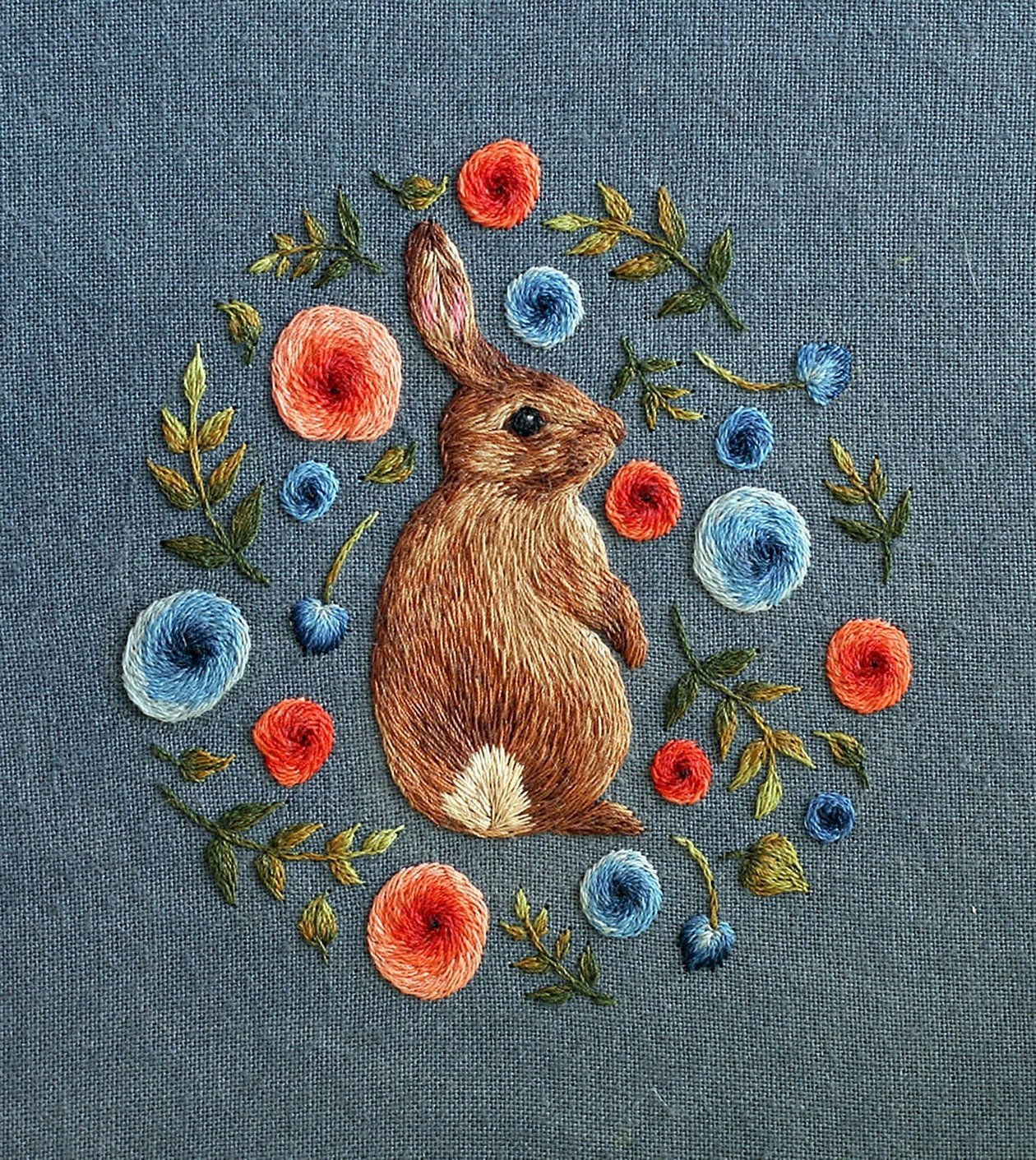
Sometimes it is necessary for the embroidery to be in the form of a three-dimensional applique. In this case, ribbons, cords or beads of different colors are used.
Important! It should be noted that different types of embroidery can be used not only separately, but also combined with each other.
Embroidery styles evolved over centuries. Symbols that acted as amulets were often used. It was believed that such types of needle embroidery on fabric helped the owner become happy.
There are certain rules for this kind of work:
- It is believed that in this case, nodules should form, as they prevent the flow of positive energy.
- The placement of the hand embroidery is not critical.
- It is believed that a master should not create embroidery on his own clothes.
- When creating a talisman, it is recommended to use symbols of the sun, stars, trees, animals or birds.
The drawings used in the creation of the works had different purposes. It could be not only a symbolic image, but also an abstract pattern. Sometimes the craftswomen created illustrations that belonged to the types known in the culture.
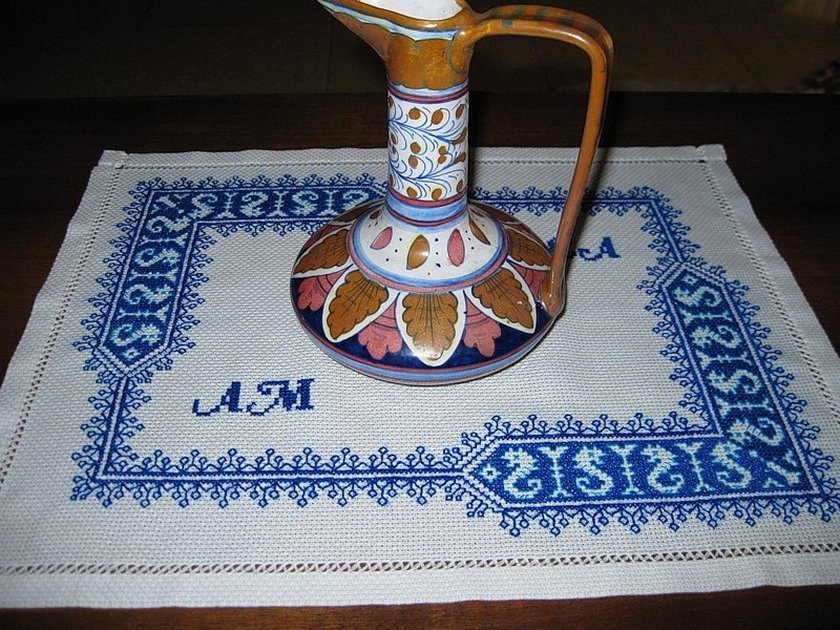
Ornaments usually arose as a result of the repetition of one or more symbols. As a rule, in such cases, it was not decoration that was meant, but sacred symbolism.
Embroidery in Russia
When working with individual styles, one can note the presence of certain standard techniques. However, depending on the place where the embroidery was created, it has distinct national characteristics.
Since the climate conditions were not favorable for growing cotton, the main materials for work in Russia were flax and hemp, used to create linen. In addition, wool yarn was actively used.

Most embroideries were dominated by various shades of red, and any could be used - from lingonberry to orange. Along with this, blue, green or yellow threads also became widespread. Black was used very rarely. It was sometimes found in folk embroideries in the Tambov and Voronezh regions.
For your information! The most common images used in the works are drawings of a tree, a horse and a bird.
Often the tree became the center of the composition, to which trees, birds or horsemen were turned. Gradually, themes that included realistic depictions of flowers began to spread. One of the most popular elements of embroidery was the image of a tulip.
Along with the usual types of embroidery, gold embroidery became widespread in the 10th century. Such patterns, in particular, were actively used to decorate church items.

Initially, this art developed in a monastic environment, where religious themes were used. In parallel, it was practiced in a peasant environment. Beginning in the 18th century, Western motifs began to appear in this area.
There are several different types of Russian national embroidery. Often they originated in a specific geographical area and then spread throughout Russia. Below are examples of such schools.
Oryol list
The emergence of this style is attributed to legendary times. It is believed that such embroidery arose thanks to the Vyatichi tribes, who inhabited the territory of the Oryol region in ancient times.
At the beginning of the nineteenth century, ethnographers discovered embroideries in the Orlov style in several villages in this area.
The works of the craftswomen were characterized by images of birds, rhombuses, which were depicted with long edges. Pagan symbols were used in the creation of the embroideries, which were supposed to give strength to those who use them. Such works of art can be considered as amulets.
The following features are characteristic of Orlov embroideries:
- When designing the drawings, it is done in such a way that one flows smoothly into the other.
- The patterns use a large number of different images. The result is a complex design that allows for many interpretations.
- The primary colors are red and blue.
To create patterns, craftswomen use a tambour or stem stitch.
Vladimir seam
This method of processing is a one-sided decorative seam. It is a type of satin stitch. During the process of working on the pattern, the outer contour should not be sewn.
Black, blue and red threads are used to create the images. The stitches are made so that they are located on one line, while being at a small distance from each other.
Tools for work
In order to start working, it is necessary to prepare suitable tools. When choosing a needle, it is necessary to consider that they can have a sharp or blunt end. In the first case, they are used for embroidery on thick fabrics or leather. In the latter case, blade needles can be used, which are easier to puncture in thick leather during the work.
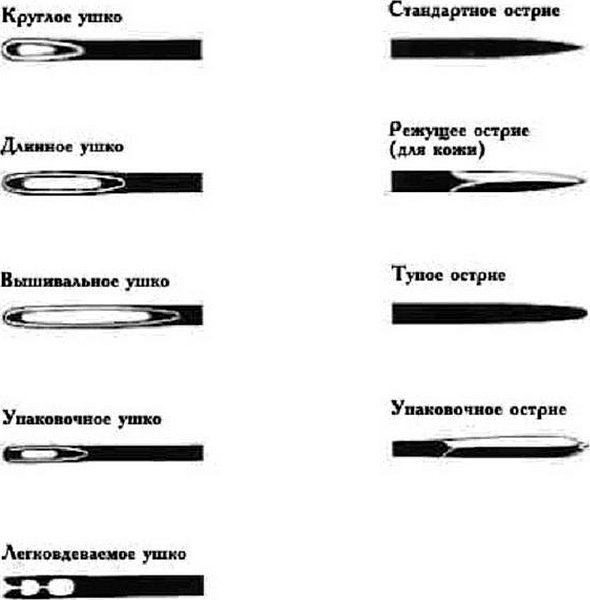
Blunt needles are convenient to use when working with evenly woven fabric or doing embroidery on canvas. There is no need to pierce the fabric. This is convenient for beginners.
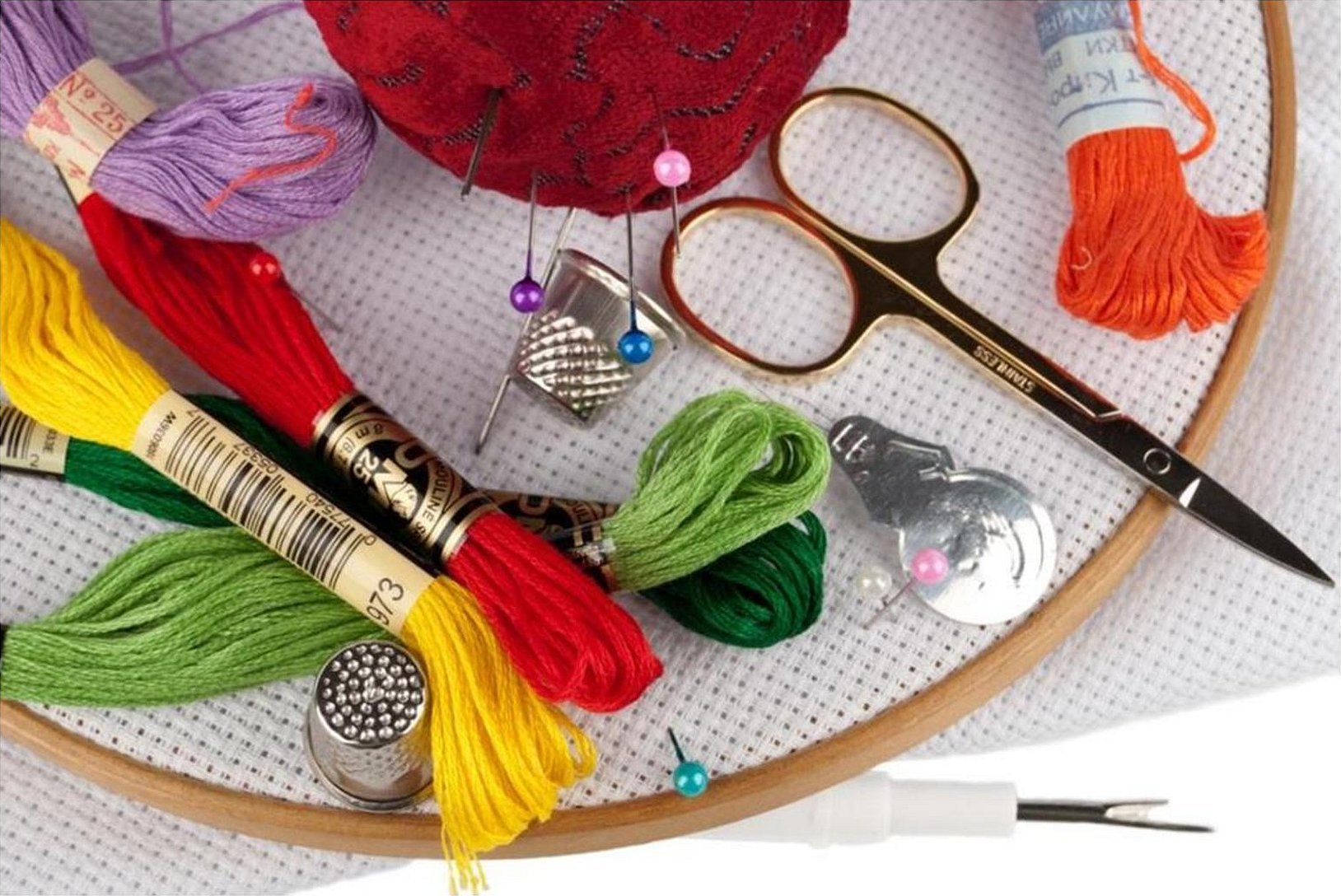
A special fabric is often used as a basis for embroidery - linen made of twisted yarn or mesh cotton. This material is called canvas and can be used as a stencil for embroidery. In order to embroider on a certain fabric, you need to know its number. It characterizes the number of holes that fall on one inch. To find out how many there are in one centimeter, do the following calculation. Divide the number by 25 and multiply by 10. The result will be the number of holes along one centimeter. You can embroider on canvas in various ways, for example, with a garus.
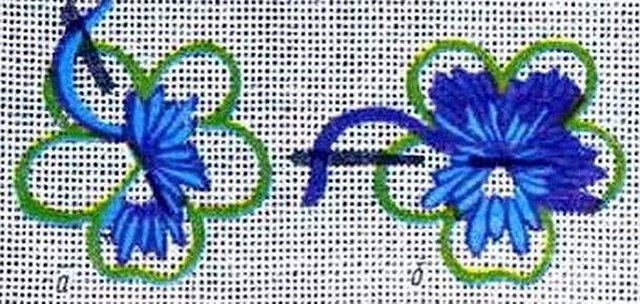
A passe-partout is a frame with a large hole in the middle. The fabric on which the embroidery is done is stretched on it. This device is made of cardboard. There is a similar tool - a hoop, which is usually used for embroidery work. They are usually a round wooden frame for stretching the fabric. It is convenient to use it for embroidering with a park.
When working, it is convenient to use an embroidery pattern. It is a drawing that is divided into small squares. Sometimes it is immediately made on canvas.
You will also need a thimble, pins and scissors for this work.
Threads for handicrafts
When embroidering with threads on fabric, different types of threads are used:
- Melange has the same color throughout. However, different shades merge into one another.

- There are metallized threads. Thin gold or silver is called gimp. They are made in the form of a spiral. Recently, aluminum threads have been used (for example, lurex). The use of such material in cross stitching gives the work a special beauty.
Embroidery uses various types of threads made from natural or artificial materials.
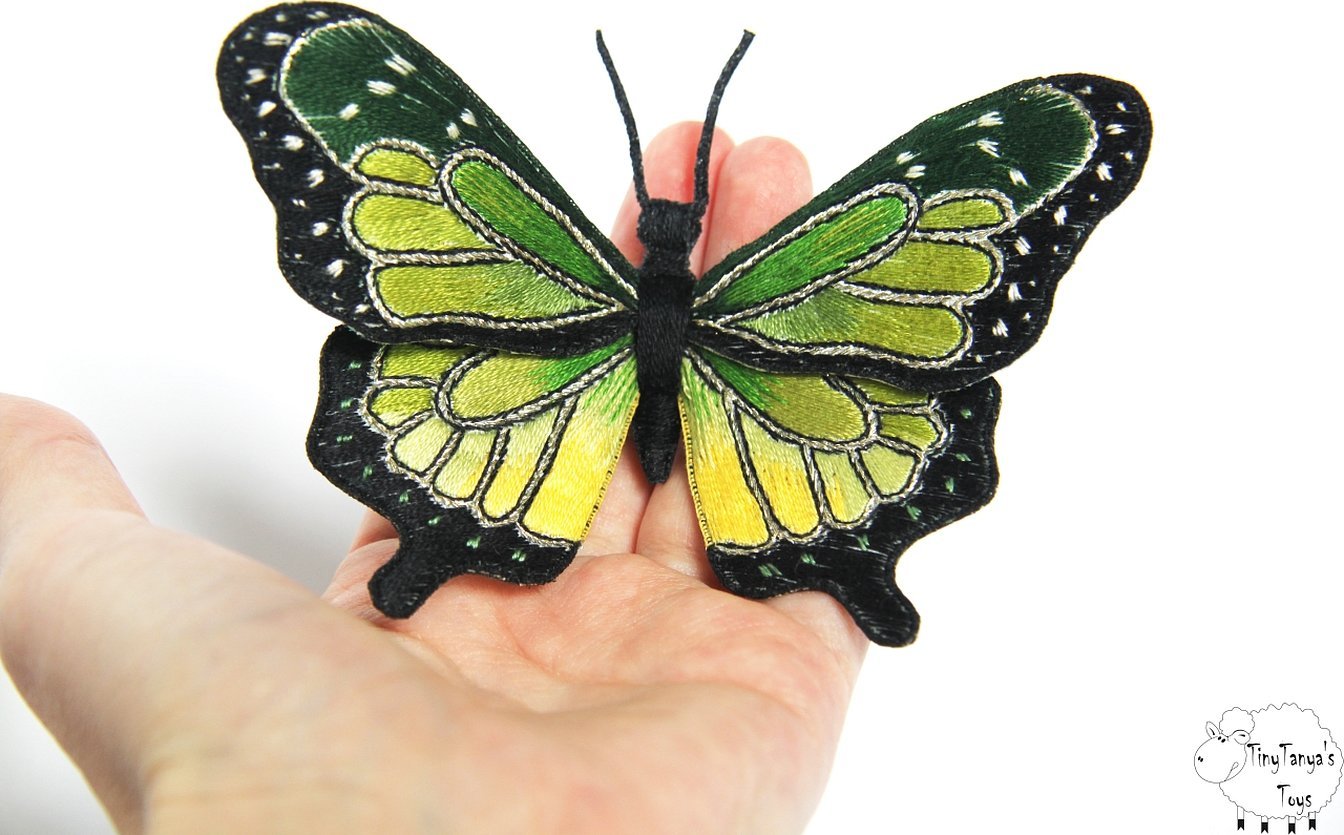
Handicrafts using floss threads
Such threads were invented at the end of the 18th century. The Frenchman Dolphus treated cotton with alkali. As a result, light, silky and slightly shiny threads were obtained. Their important feature is high-quality dyeing. When buying floss for sewing, you can see that the threads are not twisted and are easily separated lengthwise into thinner ones.
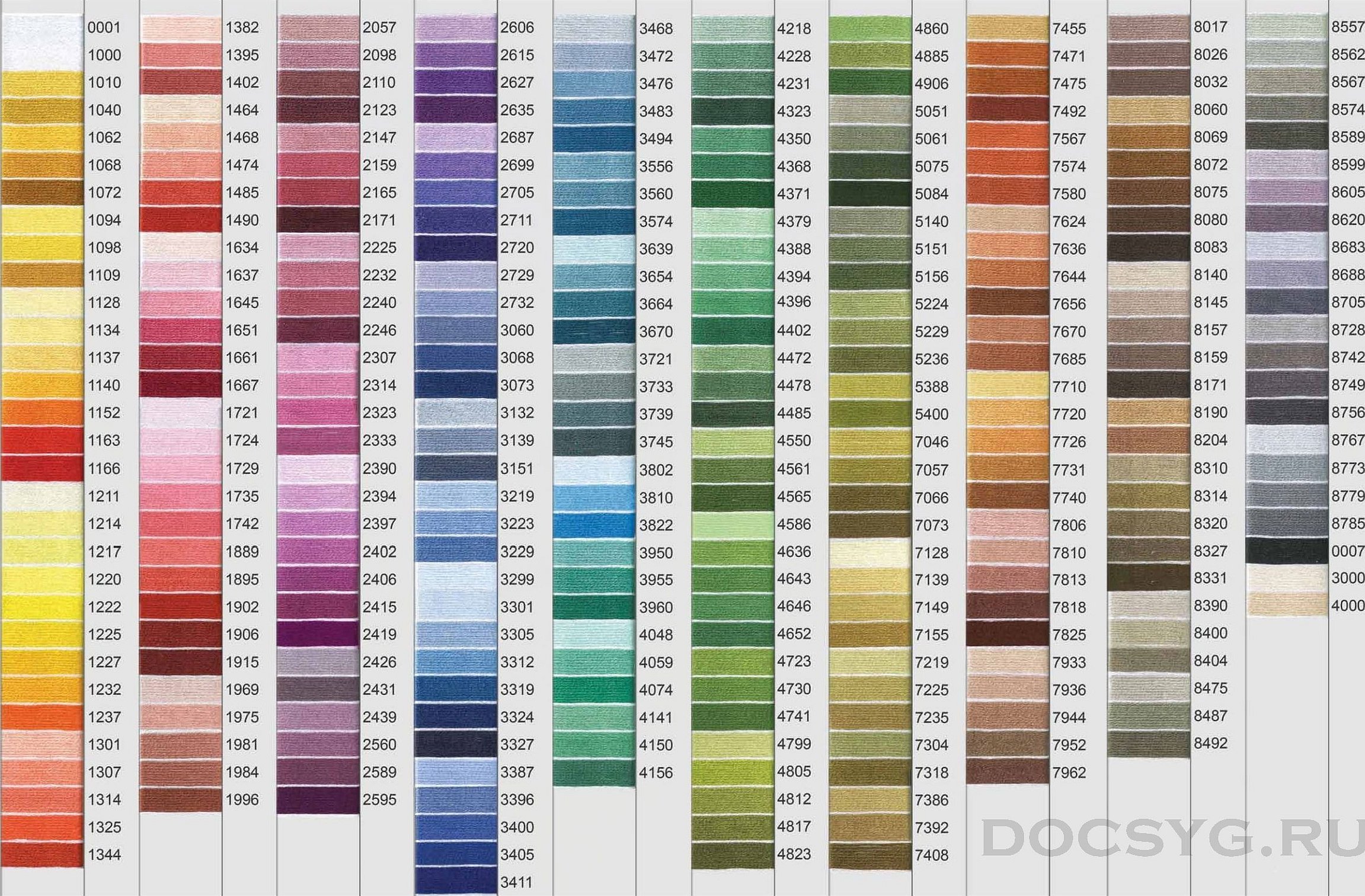
Nowadays, threads are made from many natural or artificial materials. Each manufacturer has a color chart that allows you to choose the desired shade from dozens of possible ones.
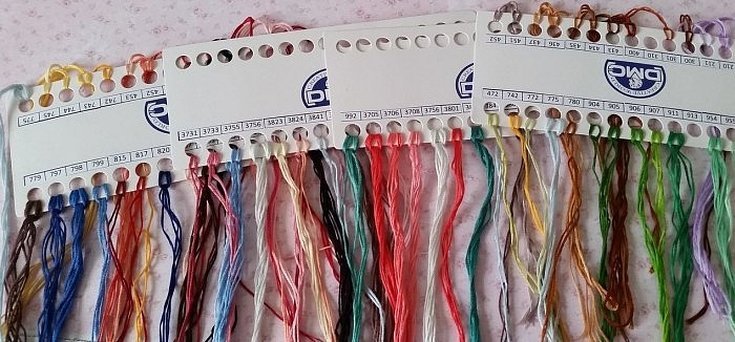
These threads are used for cross stitching on canvas. Beautiful works are obtained using floss for satin stitching.
Types of embroidery and techniques of their execution
There are many techniques and methods for creating embroidery. Different techniques can be used separately or in combination with each other. Below are some of the most popular techniques.
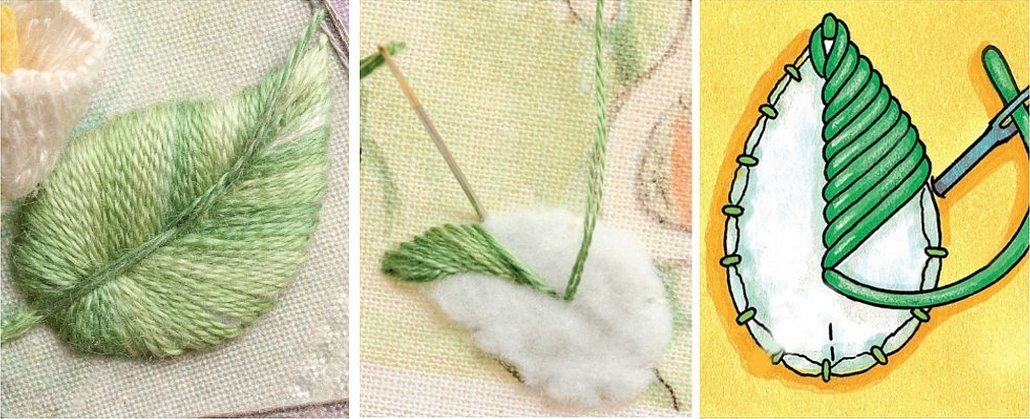
Openwork needlework - Richelieu
This style of embroidery originates in the fourteenth century, during the Renaissance. It originally appeared in Italy. This type is characterized by the use of openwork embroidery on a free contour. In this case, the elements of the pattern must be connected by means of jumpers.
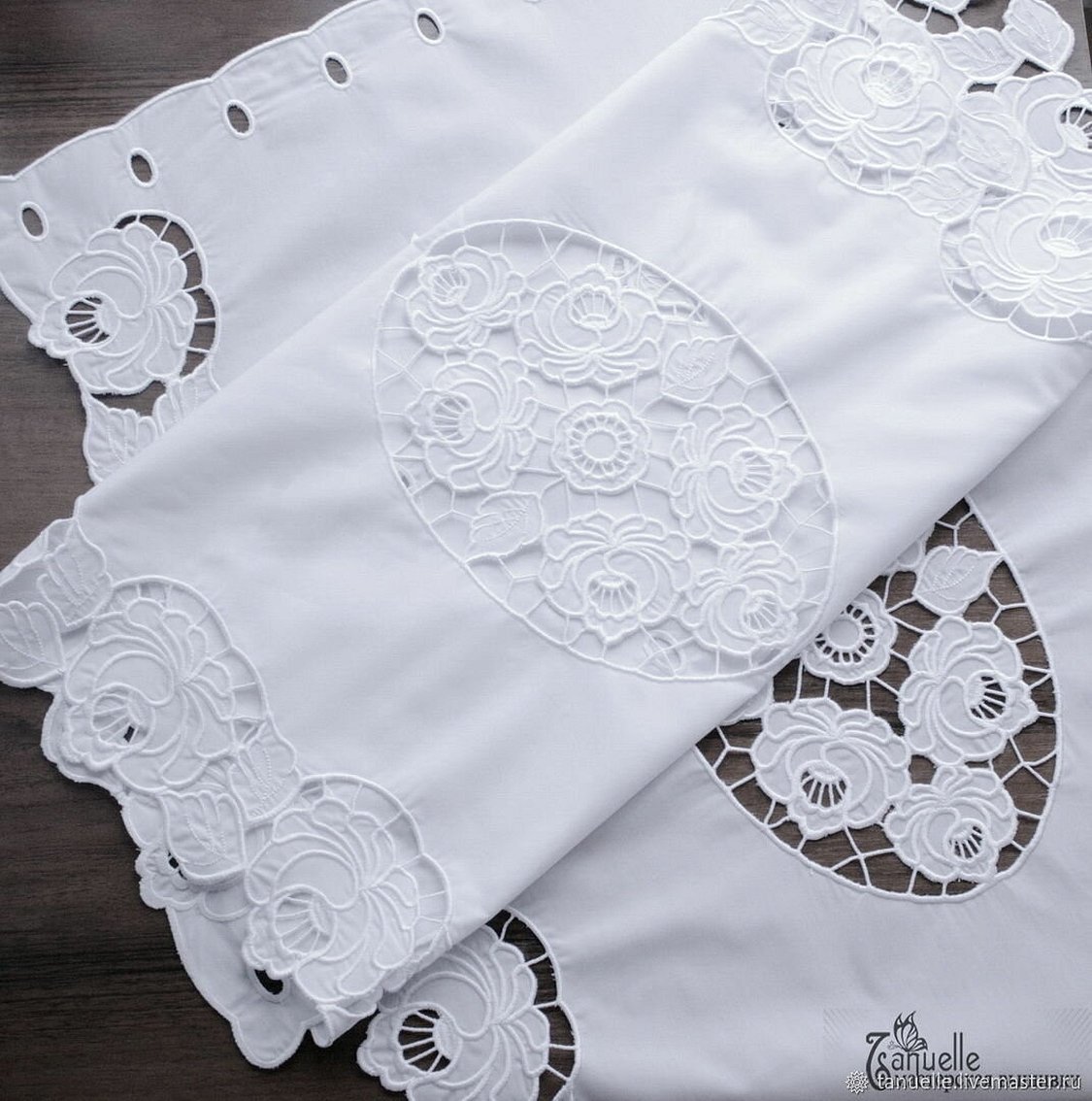
Initially, only rich people could use such fabrics. It is known that Cardinal Richelieu loved to wear clothes with such decorations.
Embroidering with silk ribbons
This type of decoration reached its heyday at the end of the 19th century. This type of embroidery is a means of creating three-dimensional patterns on hats, clothing and household items.
The technique of work is not particularly difficult, but it uses 15 types of stitches. In most cases, embroideries with floral motifs are created this way. Such patterns look solemn and elegant.
Embroidering with beads
The use of beads in embroidery is an ancient form of handicraft. The reasons for the growing popularity of this type of art are: availability of material, ease of work and spectacular results.
This technique is how to embroider wallets, shoes, bags, clothes, curtains, interior items. When working in this technique, the following stitches are used: stem, line, arched and monastery.
Richelieu, but not a cardinal
This embroidery technique is used to make openwork embroidery. Its peculiarity is that the fabric is cut out around the satin stitch patterns. As a result of these actions, the fabric becomes openwork.
Diamond painting
This embroidery technique does not use any threads or needles. Acrylic rhinestones are used as the material for the image. A special canvas is used as the basis for the drawing, on which the picture is made. Tweezers are used for the work, and rhinestones are attached using an applicator. An adhesive layer is applied to the base in advance. Needles are not needed here. The drawing is laid out using a pre-prepared scheme.
To do the work you will need accuracy and patience. Professional training is not required. Knowing what types of embroidery there are will help you master professional techniques faster.
Smooth
In this technique, stitches are placed parallel to each other, at a minimum distance. In this case, one or another detail of the image is filled. Any fabric with a solid surface can be used as a base.
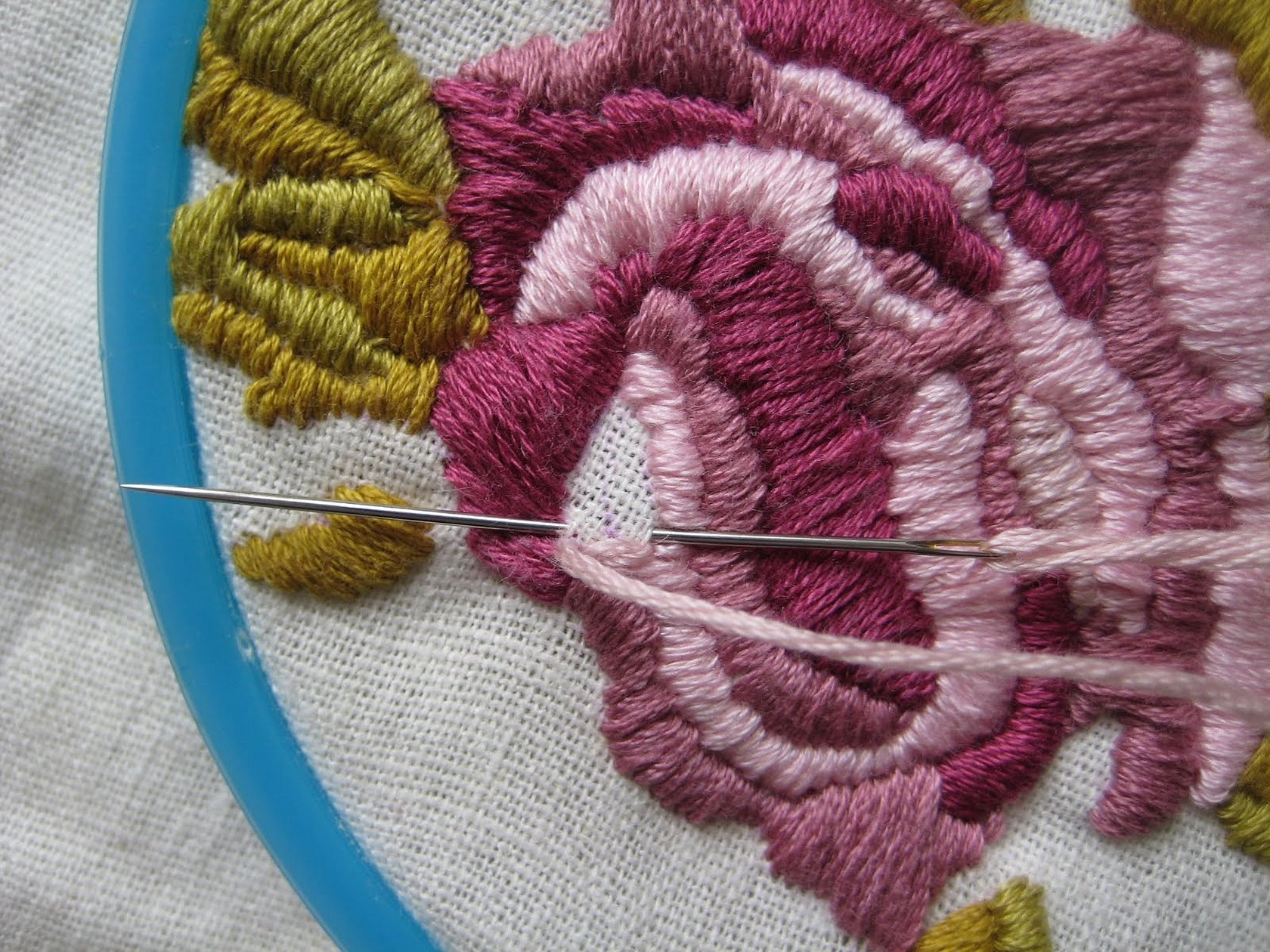
There are two types of embroidery on clothes with satin stitch by hand: one-sided and two-sided. In the latter case, a beautiful pattern can be seen from both the front and back sides. In addition, it is divided into counted, free, convex, flat and cut.
If satin stitch with overlay is performed, then the detail of the pattern that needs to be stitched is processed with thick threads. They should be located perpendicular to the future stitches. Then satin stitch is sewn on top. The result is a beautiful figure that has volume.
For your information! This method of embroidery is often used to depict flowers, stems and leaves.
What can be embroidered: ideas and design
Beautifully done embroidery will help to decorate clothes, shoes, accessories, household items, toys. The variety of existing techniques and designs will help to find a solution that will help to decorate life. It is impossible to know everything about embroidery, but it is quite possible to become a master of your craft. Below are just a few examples, but in fact, the possibilities of using embroidery are almost unlimited, and it is impossible to list them all.
This allows you to make beautiful souvenirs or Christmas tree decorations.

Sometimes embroidery is used to decorate bags, purses and other accessories.

An elegant design decorating clothes looks beautiful.
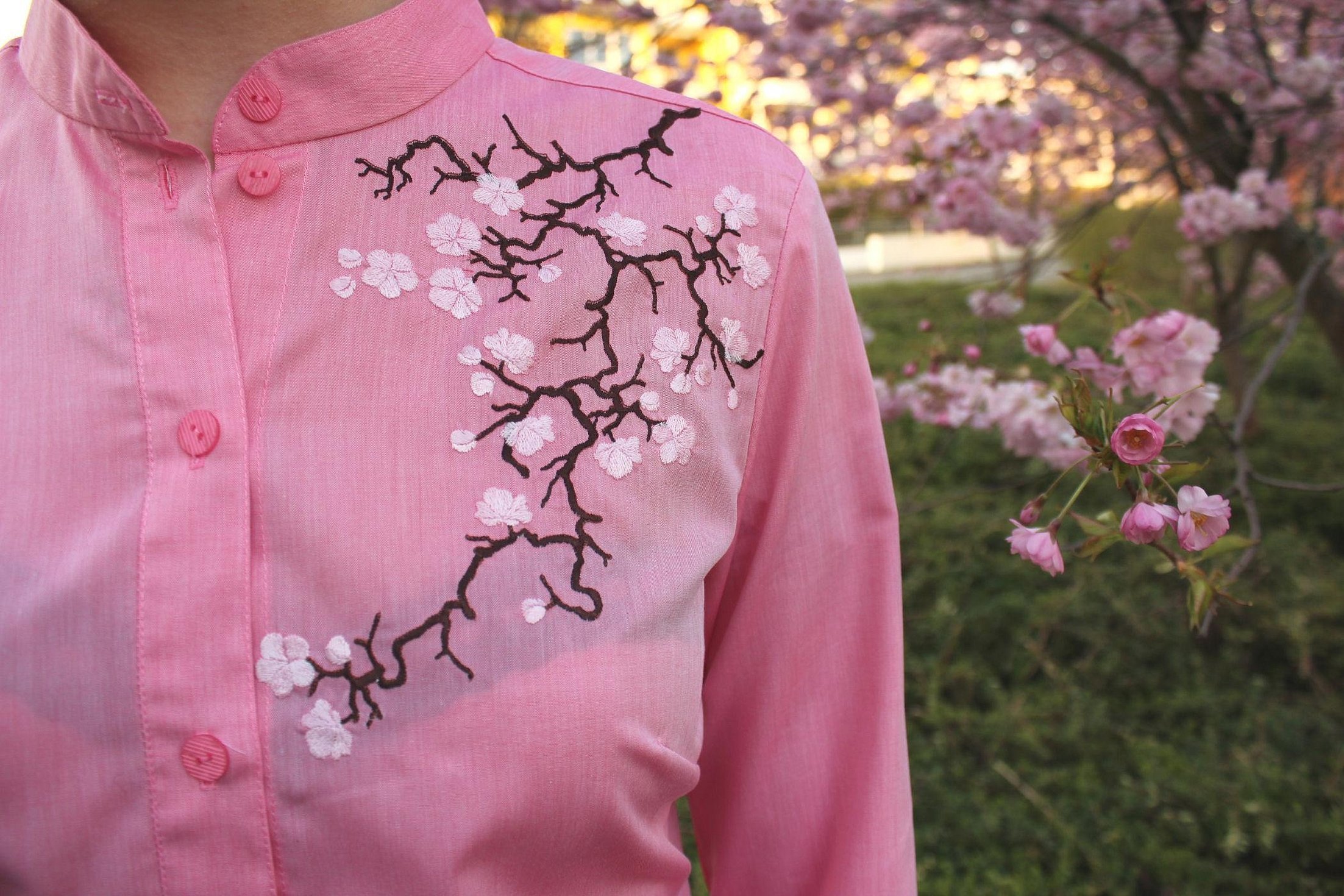
Sometimes embroidered shoes look beautiful.
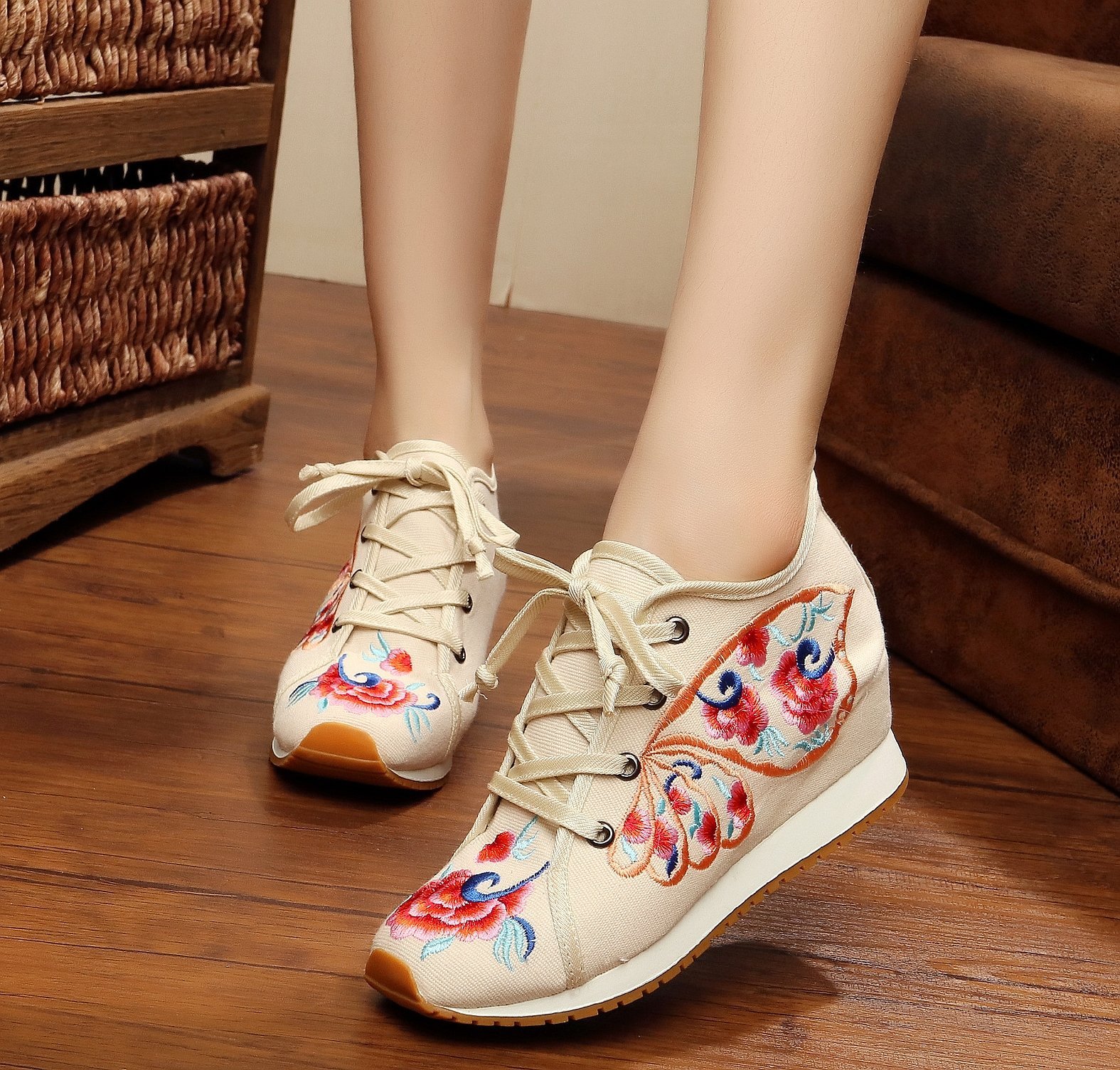
Embroidery is an art form that is accessible to many. There is a real opportunity to make embroidery that will decorate life, and in some cases will amaze the viewers with its beauty. A large number of available tools and materials allow you to take the first steps in this type of craft and then begin to improve it.




